#butze rapids
Explore tagged Tumblr posts
Text
She Brought the Magic Back - Part 14
Phoenix is going through it after his argument with Edgeworth. Luckily, Larry's in town to liven things up!
First | Previous | Next
INT. WRIGHT'S APARTMENT - DAY Phoenix is lounging on the new couch, exaggeratedly pushing buttons on his phone. PHOENIX (shouting across the apartment) Truce? How do I tell if the messages are sending again? Trucy peeks her head out of his bedroom. She has her pink magician outfit on, including the hat. TRUCY If they say delivered, Daddy. Phoenix glares at the screen. He gives an exasperated sigh, slams the phone shut, and lets it fall to the ground. He covers his face with his hands. Trucy jumps on his stomach. PHOENIX Oof. TRUCY What's wrong, Daddy? Phoenix brushes her hair out of her face with a smile. PHOENIX Everything's fine. Just some… adult problems. Trucy puts her finger to her chin to think and then gives an 'A-ha!' motion. TRUCY I've been practicing my disappearing act! I can use it on your problems! Phoenix laughs. PHOENIX I think it's already working. Phoenix's phone plays the Steel Samurai theme. He perks up and flips his phone open. Trucy runs off. PHOENIX (cont'd) (on the phone) Hello? … Listen, I'm sorry. Wait, who told you? … Really? … Crud. … Yeah, yeah, come on over. Rapid knocks on the door. Phoenix looks at his phone and back to the door. PHOENIX (cont'd) (on the phone) Hang on, I gotta- Phoenix opens the door and LARRY BUTZ (26) bounds through to jump on him. LARRY (whiny) Nick! How could you keep me outta the loop like this? Phoenix tries to split up the hug. PHOENIX Larry, please- Trucy peeks her head around the corner holding a puppet. PHOENIX (cont'd) I was worried you might- Larry vaults toward Trucy and lifts her in the air. She giggles. PHOENIX (cont'd) -overwhelm her. TRUCY Who is this, Daddy? LARRY Your pops and I go wayyy back. I was his very best friend when we were your age. Trucy looks at Phoenix, still in Larry's arms. TRUCY I thought you said Uncle Miles was your best friend? Larry's eyes get big and wet. LARRY (whiny) Nick! I can't believe this! And he's already 'Uncle Miles'?! That's so not fair! Phoenix rolls his eyes. PHOENIX It's a wonder I didn't tell you sooner. Why are you here anyway? Trucy pulls on Larry's goatee. LARRY Oh, that's right! I was supposed to tell you- Franziska slams the front door open. LARRY (cont'd) -that Franny's on her way!
Next
#ace attorney#ace attorney timeskip#wrightworth#phoenix wright#miles edgeworth#trucy wright#trucy gramarye#larry butz#franziska von karma#fluff#screenplay fanfic
3 notes
·
View notes
Text
Something about swings hanging off trees brings me so much peace.

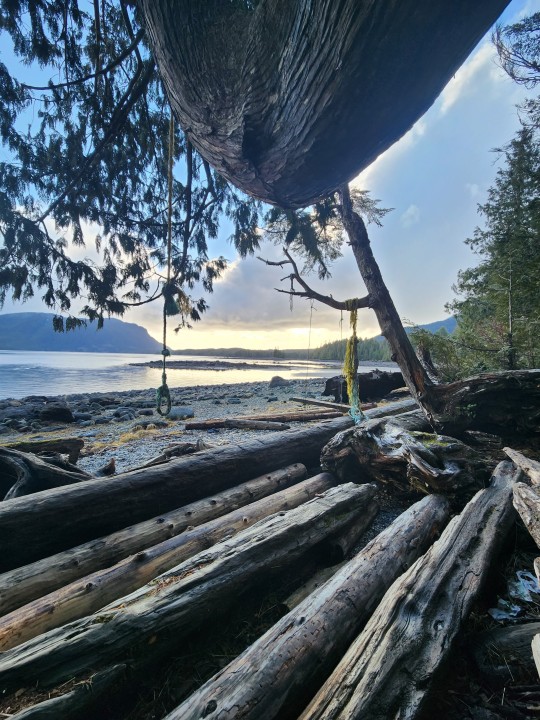
Prince Rupert, British Columbia
February 13th, 2023
2 notes
·
View notes
Text
Should you use mineral fertilizers in the garden?
Commercially available mineral fertilizers provide a quick remedy because the plants can usually absorb these water-soluble nutrients immediately. The rapid availability of nutrients also has disadvantages and can cause considerable environmental problems, especially with nitrogen. Reason: Nitrate, the main component of most mineral fertilizers, is a nitrogen compound that can hardly be stored in the soil. It is relatively quickly shifted by rain to deeper soil layers, where it affects the quality of the groundwater. The nitrate in the mineral fertilizer is produced from atmospheric nitrogen in an energy-intensive chemical process. Therefore, the use of mineral fertilizers changes the global nitrogen cycle in the long term - with the result that, for example, more and more bodies of water are over fertilized and wild plants,

The other side of the coin: If chemical nitrate production were to be stopped, the world population would no longer be able to be fed and there would be even greater famine. Mineral fertilizers are therefore of vital importance despite all their disadvantages.
Why should one fertilize as organically as possible?
What does that mean for the hobby gardener? It's simple: use organic fertilizers in the garden whenever possible. In this way, you only recycle the nutrients that are already in the nutrient cycle. You should only use mineral fertilizers if your plants suffer from acute nutrient deficiencies.
Compost
MSG / Bodo Butz
Making compost is a simple and efficient form of nutrient recycling
Compost is actually not a fertilizer, but rather a nutrient-containing soil additive. The humus improves the soil structure and thus the storage capacity for water and nutrients. In addition, soils that are well supplied with compost warm up faster in spring because of their dark color. Ripe green compost contains on average around 0.3 percent nitrogen, 0.1 percent phosphorus and 0.3 percent potassium. Depending on the composted material, the nutrient content can fluctuate greatly: poultry manure, for example, causes the nitrogen and phosphate content to rise sharply, and small animal litter in the compost provides a relatively high amount of potassium.
Compost also has a high content of trace elements and slightly increases the pH value of the soil - especially if rock flour has been added to accelerate the rotting . For this reason, plants that are sensitive to lime, such as rhododendrons, should not be fertilized with compost. Composted garden waste can be used after one year at the earliest. It is best to apply the ripe compost in spring - depending on the nutrient requirements of the plants, about two to five liters per square meter. Work the compost flat into the soil with a cultivator so that the soil organisms can release the nutrients more quickly.
1 note
·
View note
Photo
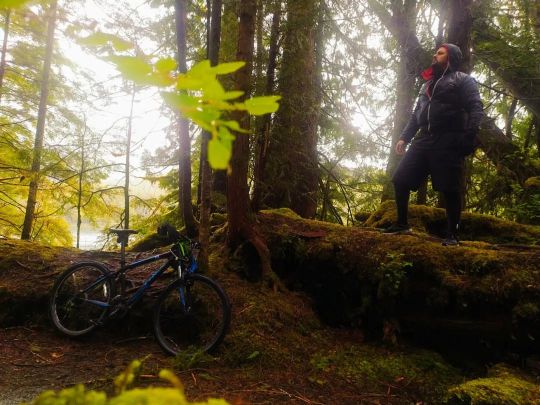
Butze Rapid Trail no Canadá 🚵🏻🇨🇦 #cicloturismo #crewship #crewlife #ciclying #canada #princerupert #ciclyinglife (at Prince Rupert BC, Canada) https://www.instagram.com/p/CeQdsgaujH_/?igshid=NGJjMDIxMWI=
0 notes
Photo
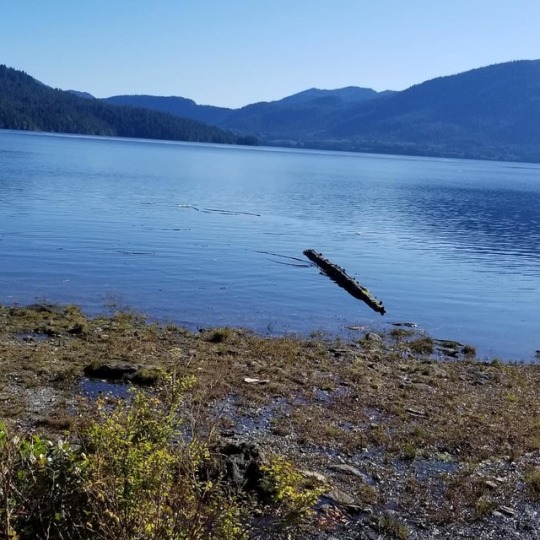
at Butze Rapids https://www.instagram.com/p/B3AwOj2BzZOcD7WIMvFI59wj7B2nA0y7GPCzpU0/?igshid=9w97lknimgs8
0 notes
Photo
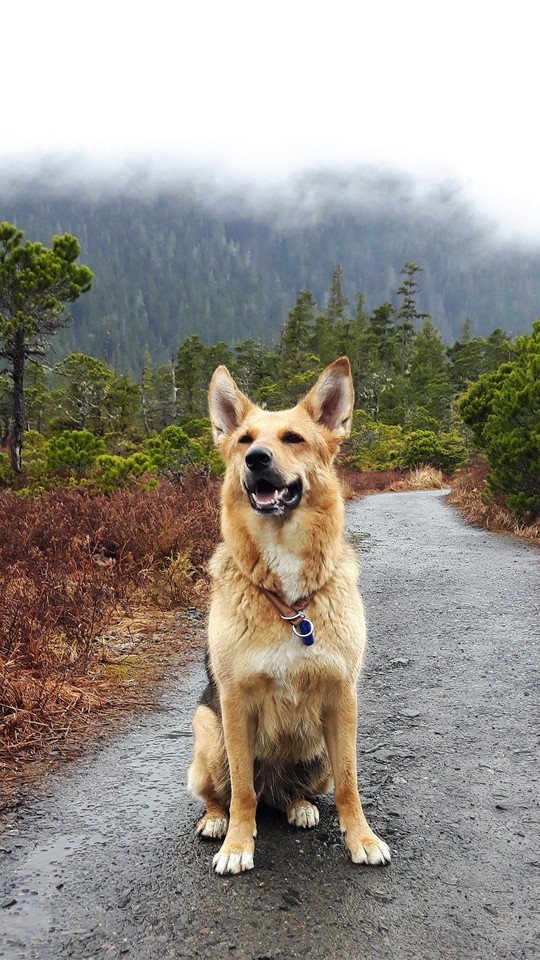
Marlo, Jerome, and I had a wonderfully busy day doing tourist things. We:
- Took a stroll through an old growth forest before breakfast
- Visited a waterfront park during a break in the rain
- Visited a marina where chartered fishing boats were coming in
- Strolled historic downtown Prince Rupert
- Hiked to a hidden cemetery
- Hiked to a secret fort from WW2
- Walked an interpretive trail around a salmon hatchery
- Walked a trail around the Butze Rapids
It was a soggy yet lovely day.
#dogblr#marlo#jerome the gnome#roadtrip#poor pupper is tired#we walked almost 20km today#poor human is tired too#im trying to decide if i have time to do a 10km hike up a mountain before i leave tomorrow#i think so??#honestly i'm probably gonna do it regardless because the sites say its one of the best hikes in pr#worst comes to worst i don't get quite as many pictures on the drive#which is probably okay because if i remember correctly#there weren't a lot of roadside turnoffs#and if we hike 10km marlo probably won't care whether we stop or not#gonna do it#wish me luck
113 notes
·
View notes
Quote
In the United States, slaughter is governed by the Humane Methods of Slaughter Act (HMSA), discussed above, which makes it "the policy of the United States that the slaughtering of livestock and the handling of livestock in connection with slaughter shall be carried out only by humane methods." Despite its welfare-oriented title, the language of the HMSA indicates the law was motivated mainly by food and worker safety concerns... When the HMSA was enacted, most animals covered by the law (including cows) were killed in the following way: first, the animal's rear legs were shackled with handcuff-type restraints. The animal was then raised by cables attached to those shackles and suspended upside down, head pointed towards the floor. (The animals are hoisted for sanitary purposes in order to keep their bodies, which will eventually be turned into meat, from mixing with the fluids that collect on slaughterhouse floors.) The animal was then slaughtered with a quick cut of the carotid artery, which leads to death within seconds. When an animal is hoisted, her weight may force hip dislocation, and conscious animals may struggle in terror and pain while hanging upside down, causing them to swing erratically in a way that endangers workers as well as causing immense pain to the animal. With that in mind, and presumably understanding the pain and terror of the shackling and hoisting process, the HMSA's first provision requires that the animal be "rendered insensible to pain by a ... means that is rapid and effective, before being shackled, hoisted, thrown, cast, or cut." This is usually accomplished by a "captive bolt gun." The gun plunges a metal bolt, attached to the gun, into the brain of the animal and, if correctly used, will cause unconsciousness in the animal. If the process does indeed render them unconscious, the animals are unable to feel pain, fear, or stress, and if the rest of the process is followed, are killed very shortly after the captive bolt procedure. Animal advocates have raised serious concerns, however, that in practice, slaughter causes immense suffering. Slaughter workers report having to use the captive bolt gun as many as ten times before a cow collapses into unconsciousness. And many "stickers," the workers who slit cows' throats, often receive cows at their stations who are still conscious and moving. Paradoxically, slaughter of animals has also been declared to be humane under subsection (b) of the HMSA even if animals are not rendered unconscious before they are shackled and hoisted as long as the animals are slaughtered "in accordance with the ritual requirements of the Jewish faith or any other religious faith." Although not expressly mentioned in the statute, "kosher slaughter" the ritual slaughter carried out under Jewish law requires that an animal be fully conscious when she is slaughtered. Thus, this section of the statute declares that it is humane to hoist and shackle animals without rendering them insensible to pain based on the recommendations of religious leaders who testified before Congress during the writing of this law. Despite the apparent desire in section (a) of the statute to ensure that animals are insensible to pain, section (b) approves a situation in which the animals are fully aware of all the events leading up to their death. In 1974, in one of the American animal law movement's first lawsuits, plaintiffs challenged the aspect of the HMSA that effectively provides an exemption to the requirement that animals must be rendered unconscious before being shackled and hoisted. The plaintiffs in Jones v. Butz argued that section (b) violated both the purpose of the law (to provide humane methods of slaughter) and the federal First Amendment, which prohibits the government from either establishing a religion or interfering with an individual's free exercise of her own religious beliefs. The court rejected these arguments because Congress had held hearings and made a factual determination- which the court refused to question- that kosher slaughter (which prohibits the slaughter of unconscious animals) was "humane." Unwilling to contradict the findings of the legislature, and finding no conflict with the requirement that church and state be separate (because the secular purpose of "humane slaughter" was being satisfied), the court upheld the law. Like the ostensible requirement in the U.S. law, "[m] ost developed and many developing countries have legislation that requires pre-slaughter stunning."^ The European Union has adopted similar requirements, with similar exceptions to the American law: animals must be rendered insensible unless a "religious rite" requires otherwise. This requirement is not universal; one study indicated that as many as half of the animals slaughtered in "developing" countries are not stunned before slaughter. Thus, between the exception under many laws for kosher and ritual slaughter, and other countries that do not even have a stunning requirement, billions of animals annually are hoisted and shackled and slaughtered while fully conscious. And as a matter of practical application, they are also forced to watch the slaughter of many other animals who are being killed at the same time. Finally, even when animals are stunned, the methods may still cause animal suffering, as when manual percussive means are used, such as sledge hammers or poleaxes.
A Worldview of Animal Law - Bruce A. Wagman and Matthew Liebman (2011) on the killing of cows in animal agri. [I wanted to do some research on kosher slaughter before posting this bc the arbitrariness of US law seemed crazy to me. I was interested to know why it was Jewish tradition for animals to be conscious when they're killed and what the welfare standards around that were. So I opened 10 tabs on the subject, as usual. The first from a Jewish vegetarian discussing how the Jewish religion has had historically good animal welfare standards and that consciousness had historically allowed them to determine that animals were well treated and not diseased. I gave up after my next tab, an article by Temple Grandin on kosher slaughter, started discussing how it was a welfare concern that cows who are shackled and hung upside down and who then have their throats slit may then aspirate their own blood, as they continue breathing until they bleed out. And after that I didn't really want to know more. ]
#graphic description#vegan#related#maybe to be deleted too screwed up#just another example of how fucked up animal agri is
7 notes
·
View notes
Text
University of California Engineers, Doctors Turn CPAPs, BiPAPs Into Ventilators and Seek Device Donations
The post University of California Engineers, Doctors Turn CPAPs, BiPAPs Into Ventilators and Seek Device Donations See more on: https://www.ellymackay.com/
A group of doctors and engineers from UC San Francisco, UC Berkeley, and other hospitals have developed a technique for repurposing CPAPs AND BiPAPs so they can be used as ventilators. The group, calling themselves the COVID-19 Ventilator Rapid Response Team, have developed a way to retrofit off-the-shelf sleep apnea devices so they can mimic the function of a ventilator that gets oxygen into the lungs of patients who are seriously ill with the new coronavirus. To get these adapted ventilators into hospitals quickly, they are seeking speedy FDA approval and want to enlist local and federal officials. They also are requesting donations of CPAP and BIPAP devices that citizens may have in their homes and not be using.
Government regulations typically restrict the development and use of medical devices for purposes for which they were not designed. The Food and Drug Administration has issued new guidance in light of the ventilator shortage, enabling sleep apnea machines to be used by hospitals caring for patients infected by COVID-19. Doctors and engineers collaborated on the design and are in the process of establishing the infrastructure to get them repurposed and into hospitals.
They also are seeking government support in rallying manufacturers, and logistics companies to work together to provide simple off-the-shelf components, to repurpose devices, and get them distributed as quickly as possible to doctors.
The new coronavirus can attack a patient’s respiratory system, weakening the lungs and, in severe cases, making it difficult, if not impossible to breathe without a ventilator. Ventilators are in scarce supply in hospitals around the globe, with many hospitals unable to provide them for new COVID-19 patients, let alone other patients who need help breathing for non-virus-related conditions. The Institute for Health Metrics and Evaluation at the University of Washington has forecasted that the demand for ventilators will far exceed the capacity available for COVID-19 patients by mid April.
“We are hoping for expedited government support because hospitals are quickly getting besieged with COVID-19 patients,” says Ajay Dharia, pulmonary critical care doctor and staff physician at Mills Peninsula Hospital, in a release. “In emergency situations doctors need viable alternatives that can be made ready in very short order. The use of home-based CPAP and BiPAP machines offer such a possible solution, but to become a feasible option this project needs backing from the FDA, manufacturers, and the government.”
The priority now is for the state and federal government to pick up this project and work with manufacturers and logistics companies to put the components together and get devices to healthcare workers on the front lines. The group also is seeking donations of sleep apnea devices from the community that they can repurpose and distribute to hospitals that need them. People and organizations can find out how to donate devices at ventilatorsos.com. Members of the public are also encouraged to contact their state governors and White House officials and voice their support so that these efforts to increase the number of retrofitted ventilators are quickly approved and deployed.
“We’re trying to help the government by bringing in a solution that we think can scale quickly,” says Bryan Martel, a team organizer and co-founder of Berkeley Engineering and Research Inc. “This is an opportunity to address a life-critical issue and we’re looking forward to doing everything we can to help the White House and governors save lives during this crisis.”
Members of the COVID-19 Ventilator Rapid Response Team include:
Bertram Lubin, MD, Professor Emeritus, UC San Francisco
Ajay Dharia, MD, Pulmonary Critical Care, Staff Physician, Mills Peninsula Hospital
Karl A. van Bibber, Professor, Department of Nuclear Engineering, UC Berkeley
Grace O’Connell, Associate Professor of Mechanical Engineering, UC Berkeley
Glen Stevick, PhD, Berkeley Engineering and Research, Inc.
Bryan Martel, PE retired, Berkeley Engineering and Research, Inc.
David Butze, Member of Stand Together Foundation
from Sleep Review https://www.sleepreviewmag.com/sleep-treatments/therapy-devices/ventilation-therapy-asv/engineers-doctors-turn-cpaps-bipaps-into-ventilators/
from Elly Mackay - Feed https://www.ellymackay.com/2020/04/08/university-of-california-engineers-doctors-turn-cpaps-bipaps-into-ventilators-and-seek-device-donations/
0 notes
Text
The Evolution of a Dairy Farming Business Plan
By Heather Smith Thomas, Photos courtesy of Alan Yegerlehner – The small family dairy farm in Indiana run by Alan Yegerlehner produces grass-fed milk products, marketed from their pasture dairy. This has been their dairy farming business plan for generations. For Yegerlehner, who grew up in Clay City, a small agricultural community in Indiana, his dairy farm encompasses the original 104 acres where he grew up, and where his great-great grandfather emigrated from Switzerland in 1860.
“Each generation has managed the farm in one way or another. My father came back to the farm after serving in World War II and went to Purdue,” says Alan. “After high school, I went to Purdue University for four years. I dragged my feet a bit, but my parents wanted me to go, so I did.”
After World War II, Alan witnessed the rapid changes in farming.
“I was at Purdue during the Earl Butz era in the 1970s when things were rapidly changing in agriculture,” he explained.
Modern technology and new practices aimed at increasing production were evolving during those years and dairy farming business plans were being adjusted to match the trend.
Ice Storms, Power Outages, Blizzards... Are you ready?
Let our experts help you prepare for the worst. Start your emergency preparation by downloading this FREE Guide. YES! I want this Free Report »
“This is what the colleges were preaching, so I accepted it and got swept up in the idea that dairy farmers needed to expand, increase production, leverage money—borrow all you can and grow big. Down deep inside me, I knew some of these things weren’t right, but I went into partnership with my father and we borrowed more money to expand. We accumulated quite a bit of debt, and our debt to asset ratio wasn’t the best,” Alan said.
He and his wife Mary were married in 1974. Alan graduated from Purdue in 1976, and they lived on the dairy farm.
“I’ve never had any other job. I grew up farming and kept at it a little while I was at school. When we came back full-time, Mary and I purchased my grandfather’s 80-acre farm, which is next to the original 104 acres and this is where we’ve been ever since,” he says.
“During those early years I was very interested in organic and direct marketing, but at that time no one was really doing that here in Indiana. If you mentioned these things you were labeled as a weird person!”
An Evolutionary Change to Yegerlehner’s Dairy Farming Business Plan
One day, he received a publication from New Farm magazine.
“I was amazed by the fact some people were actually doing this [organic dairy farming] and making a living at it. The next few years we tried to make some changes. I went to a couple of seminars that Rodale put on. I found another farmer nearby who was interested in the same thing. We compared notes and supported each other emotionally. We knew we weren’t completely alone,” Alan says.
“We started out with some changes in our cropping because that was where my biggest interest was. Our farm had crops and a dairy. My dad and mom started the dairy in 1950. We’ve had milk cows on the farm since that time. I was interested in both the dairy and crops, but maybe a little more interested in crops.”
As they made changes, they started to do some of the rotations a little more intensively, with more wheat, and adding more clover and legumes in the pasture ground they rented.
“We borrowed more money and put up some blue Harvestore silos. Our barn burned in 1973, so we put up a new block building and herringbone milking parlor, so we had a lot of debt,” he said.
“I started making changes in the cropping and tried rich tillage, trying to build soils using green manure and limited tillage. We were able to quit using herbicides, doing some experiments with rotary hoeing,” Alan said.
“We were having a good time with that, and doing some things that didn’t make us so dependent on the chemicals and commercial fertilizer. We went through the 1980s and early 1990s doing that, and we were actually growing nearly all our own feed for the dairy, using haylage, corn silage, and corn. We felt we were doing a good job managing what we had, but in the early 1990s, I realized that even though we were making all this progress with the crop farming we were not doing very much with the marketing side. We weren’t getting anything extra for our product because we weren’t marketing our milk as organic,” he said.
“We were feeding good feed to our cows but we still had all those silos and chopping equipment that I would have to replace—and have to borrow more money—so all of a sudden I realized this was crazy. In 1991, I was reading about grazing dairies, so we started grazing our cows rather than feeding them harvested forage. Then I read about seasonal dairying and the light bulb really went on,” explained Alan.
A Yegerlehner calf.
Many of their cows were calving in the fall, so he went to a fall seasonal calving. “This was before I really understood the seasonal aspects in relation to the grazing and the cows’ nutritional needs. Our fall calving was kind of nice because the cows were dry in the summer when it was hot, but it didn’t match up very well with the nutritional level of the grass for the cow and calves,” he says.
So the next year they delayed breeding six months, and brought the cows back into a spring calving window.
“Ever since 1993 or 1994, we’ve been spring calving our seasonal herd. But during the late 1990s, we were still selling our milk and crops on the commercial market.” He realized that they were going the right direction with their management, but were not getting paid for their extra efforts. The debts were still there and they weren’t making progress on reducing those.
“It was like our ship was slowly sinking. So in 1998, we made a tough decision. Cropping had been a part of our farm for a long time, but I decided to quit the commercial grain farming. We still had debt on some of our equipment and some of it was nearly worn out. Rather than borrow more money to replace it, we sold the equipment, and didn’t make enough to cover the debt on it. We gave up some of the land we rented, and just concentrated on the farm that Mom and Dad owned and the one I owned,” he says.
“We sold the silos (essentially gave them away) and put the whole farm into perennial grasses for a pasture dairy. For a couple years we were just milking the cows but were still selling the milk on a commercial market. We realized we needed to make some changes on the marketing side. In the fall of 1999, Mary and I started looking around to pick up some ideas. We decided to process our milk on the farm,” he said.
They bought some used equipment from a fellow who had made cheese in a winery. “I had never made cheese in my life, but we remodeled our barn and put in the equipment. The man who sold it to us came up here and helped us make the transition and gave us some quick lessons. We became cheesemakers.”
That next year was the start of a big change to our dairy farming business plan. “We went to seasonal grass dairying and direct marketing, producing everything on our farm. We didn’t really know what we were doing, but it was a leap of faith,” he said.
“Back in 1992, we had also had some experience with holistic management. A man I worked with here had some experience in sustainable agriculture. Mary and I took a couple of small training courses that helped us a lot—to steer us along the path with some key ingredients. It was still been a tough battle with the debt load; the debt was like a rock around our neck that kept us from going anywhere. Then a couple years ago we finally got things paid off.”
As part of holistic management in our dairy farming business plan, they looked at some of the changes they were making in 2000.
“We wanted to make some changes that would allow our children to farm with us later if they wished. We have three children, Kate, Luke, and Jess. If they wanted to come back to the farm, we wanted to have a way to work them in, too. This model of holistic management was helpful and really fit for us; we used those principles as we made the changes. We structured things so that they could farm with us if they wanted, and if they didn’t, that would be fine, too,” Alan said.
Alan Yegerlehner and his daughter, Kate, pose in a field after a cattle drive
“Our daughter, Kate, the oldest, loved cows all her life. That’s all she really wanted to do—take care of cows. She went to Purdue during 1998 to 2002, and after she graduated I let her take over a lot of the management of the cows and grazing. I helped wherever she wanted me to, but I gave her more of the responsibility, and the leeway to make mistakes. That’s what my dad did with me, and this is how we learn the most.
“My father was steeped in the commercial end of it with use of fertilizers, etc., but he was still very stewardship-minded in terms of taking care of the land with good soil and water conservation. He allowed me, when I came back, to take over a lot of things, and I’m sure he cringed many times at some of the changes I was making. He allowed me to make the mistakes and learn as I went,” Alan said.
Kate has had the same freedom to try things and make a few mistakes.
“She has tackled it and we all continue to make mistakes and we learn from them,” he said. It’s nice to see a family team effort on the farm.
“As we made the transition to on-farm processing, we still sold a little milk to the co-op for a few years. At that time there were not very many people making this kind of change. Our milk levels fluctuated a lot in what we were shipping to them and they finally told us they wanted all our milk or none of it. So we quit sending any milk to the co-op and everything we produced we have sold ourselves,” he says.
Marketing Up: A Key Component of a Dairy Farming Business Plan
“We started going to farmers markets, right after we began processing our own milk, and also had a little store at the farm. We’d gotten some ideas earlier, when Mary and I and our three children went to Switzerland, the year that my father passed away. We visited with our distant cousins and re-connected with some of our roots. We saw how everything was sold locally. We enjoyed seeing the small farms our cousins had, and how each village had their own cheese-making businesses, dairies and meat markets. Everything was produced locally. This was something I was really interested in but it was fascinating to see this in action,” Alan explained.
“We came back all fired up to market our own product. This was a dream I’d always had, but this brought it out in the open and we decided that this was what we needed to do. That’s when we remodeled the barn and made the little shop, with this pie-in-the-sky dream that everyone would come out to our farm to buy our milk products. This didn’t happen quite like we hoped, so as we grew we took our products to farmers markets. This worked pretty well because this gave us more exposure and we met a lot of people, and this led to other marketing venues, including some restaurants and different markets,” he said.
“Over the past 15 years we’ve done a lot of different things in terms of marketing, but our store and the farmer’s markets have been the cornerstone that helped us build. For a while, we were taking our products to four farmers markets, and this was time-consuming because we were limited on help. By the time we did the milking, processing, and packaging and delivering, it kept us all really hopping,” he said.
“The farmer’s markets were very helpful for us but we are phasing those out now, focusing more on direct marketing here at the store and some mail order sales. We hope to be able to direct sell everything we produce,” Alan says.
One concern is the increasing challenge with more government regulations.
“We were seeing a lot of that—government interference—regarding licensing and inspections. We sell raw milk, too, so that has been a challenging issue. We were trying to move toward a little more sovereignty and get out of some of these headaches. We surrendered our processing license and grade A license with the dairy. We were selling all our raw milk products (milk, butter, cheese and cottage cheese, etc.) as pet food, under a pet food label, because we have a lot of customers who want these. This brought on a whole different aspect of marketing because our normal venues like restaurants and wineries wouldn’t want to be selling pet food,” says Alan.
The cheese vat on the Yegerlehner farm.
“So we pulled back from this focus and have been just concentrating on our store. We still go to one farmer’s market but are also trying to build up some drop-off points. This has changed the complexion of our marketing. In the process, we have taken a hit, during this change, but we felt in our heart that this is what we should do, because of the purity of our product and the desires and needs of customers.”
The finished, organic cheese
The Cows
The dairy cattle on the dairy farm have been a variety of dairy cow breeds over the past 30 years. His father had Guernseys.
“Then we got Holsteins and did some crossbreeding with Holsteins and Guernseys. Then we brought in some Jerseys and did some crossing with them. After that, we brought in some Dutch Belted cows and milking Shorthorn, and then really started focusing on the milking Shorthorns. We have been breeding them for quite a few years and breeding some of our own bull calves. We also brought in some milking Devon. The past 10 years our breeding has been very focused on milking Shorthorn and milking Devon and developing them,” he said.
“We’ve been doing a lot of linebreeding, selecting for cattle that do well in a grazing dairy. These cattle do very well for us and are nice dual-purpose animals for meat and milk. We are just trying to fine-tune this to make them better and have been working closely with Gearld Fry for a few years, trying to learn the various aspects of linear measurements of cattle and developing our own breeding bulls, selecting cattle that work the best for us. But it’s a slow process,” he said.
It’s a long journey, working toward goals with genetic improvement in cattle. The genetic aspect is fascinating and challenging. “This is one of those things where the more you learn, the more you find out you don’t know,” he said.
The Family Adjusts to the New Dairy Farming Business Plan
“It’s all been rewarding and I don’t think we ever wanted to do anything different. Our children are very interested in and supportive of what we are doing. Kate is now a part of our dairy operation, but our sons didn’t feel led to be an active part in it after they grew up. All the kids did chores growing up, and were a help on the farm.”
Kids that grow up on dairy farms develop a good work ethic and are able to take on responsibility and do well in whatever walk of life they choose.
“Our middle son, Luke, went into aviation training. He wanted to fly, but went into air traffic control and has worked at a couple different airports and is now at Indianapolis. He seems to like that job. He’s married and we have two grandchildren. Our youngest son, Jess, is at Hagerstown, Maryland, working in the corporate world and also involved in ministry. He enjoys the farm but felt called to other places, too.”
His wife Mary has always had an active role with the dairy and doing bookwork for the dairy farm.
“In the early years when we started processing our milk, we were both down at the barn all the time. We sold a piece of land to neighbors who developed a small sheep operation, and Mary worked a little with them, too. Since we downsized our farm operation, we are back to Mary and I and our daughter Kate doing our dairy. Mary helps with a lot of the drop-offs and we both work together on that. We just juggle things around and make it work. In all of our management decisions we always talk it over and bounce ideas off each other, the three of us, and this helps us come up with the best approach we can.”
Have you tackled a new dairy farming business plan? What changes did you make to adjust to trends in the marketplace?
Originally published in Countryside July/August 2016 and regularly vetted for accuracy.
The Evolution of a Dairy Farming Business Plan was originally posted by All About Chickens
0 notes
Text
Walform Machine Market Volume Forecast and Value Chain Analysis 2017-2027
Walform Machines are used to produce high quality hydraulic tube connections by reshaping the tubes. Most of the Walform machines are portable and produce ISO standardized fittings, which enable flow of highly pressurized fluid to form a hydraulic line. Often this is accomplished by manual procedures, but due to risk involved with any error in quality and time consuming process, the Walform machines came into existence, which significantly overcome these challenges. The tubes get reshaped by simply inserting the tube into the configured Walform machine, which in-turn creates a profile ring in the tube itself, further a seal Viton helps in achieving leakage blocking and enables connection of tubes by simply tightening the nut. Further the machines helps significantly in saving costs related to manpower and time and enable businesses to handle larger volumes instead of being restricted by the use of the conventional method. Further being a machined process consistency is the prime trait and human errors are reduced, thus saving significantly on discard products. Further, as only one labor is required to operate the machine in general scenario, it ads significantly on labor costs.
The global Walform machine market is expected to expand with a decent CAGR over the forecast period.
Walform MachineMarket: Drivers & Restraints
The prime factor driving the demand for Walform Machine is the reviving oil and gas industry, the need for transportation of highly pressurized fluids such as Natural gas over long distances. As the global need for energy rises demand for oil and gas is bound to increase, thus fuelling more demand for Walform machines from the oil and gas industry. Furthermore, as marine activities continue to increase with globalization need for pipe fitting and jointing continues to increase. Thus, to ensure efficiency to this process demand for Walform machines is anticipated to significantly increase. As a large share of agriculture industry increasingly adopt modern farming techniques, need for pipelines shall definitely increase, thus fuelling the need for Walform machines from agricultural pipeline manufacturers. Manufacturing and Chemical industry often require the need for high pressure fluid for their operations, hence the need for effectively fitted pipes is the key safety and operational factor in these companies. This has led to increasing demand for Walform machines from these industries. Further, several cost and time benefits associated with usage of Walform machines has extremely encouraged companies to adopt Walform machines over manual labor.
Request Report Sample@ http://www.futuremarketinsights.com/reports/sample/rep-gb-4106
As economies across the globe are reviving the demand for Walform machines is expected to see continuous growth over the forecast period.
Walform MachineMarket: Market Segmentation
The Walform Machine Market is segmented into two segments based on type, pressure range and end use industry:
Based on operational mode, the Walform Machine market is segmented into:
Manual
Automatic
Dual
Based on pressure range, the Walform Machine market is segmented into:
<250 bar
250-800 bar
>800 bar
Based on end use industry, the Walform Machine market is segmented into:
Marine
Oil & Gas
Agriculture
Alternative energy
Manufacturing
Transportation and Logistics
Walform Machine Market: Regional Outlook
Geographically, Walform Machine market has been categorized into seven key regions including North America, Western Europe, Eastern Europe, APEJ, Japan, Latin America, and the Middle East & Africa. North America is projected be the global leader in terms of demand for Walform machines, primarily because of technologically advanced marine and oil and gas sector of the region. Western Europe and Asia Pacific Exc. Japan, are the next most prominent regions considering the existing demand for Walform machines. Germany and Ireland are the homes for some of the most prominent Walform machine manufacturers, thus rapid innovation and R&D in these machines is the edge these countries have, and enables high demand from replacement of existing legacy systems.
Visit For TOC@ http://www.futuremarketinsights.com/toc/rep-gb-4106
The Asia Pacific Exc. Japan (APEJ) Walform machines market is highly characterized by renting solution, but as local players enter the market to manufacture economical Walform machines, demand for new Walform machines is expected to increase significantly. China and India on the backdrop of rapid industrialization, rising oil and gas industry, and increasing technological capabilities are expected to drive the regions market. The Latin America and Easter Europe regions are also expected to generate increasing demand for Walform machines, followed by Middle East and African region. The Oil and Gas industry of these regions are expected to support the growth in these regions Walform machine market. Japan is already a matured market considering the demand for Walform machine, however, with reviving chemical industry of the region, the demand for Walform machines is expected to expand gradually over the forecast period.
Walform Machine Market: Key Players
Some of the players identified in Global Walform Machine market are:-
Butz Flow Power Technology Co. Ltd.
Eaton
Chuan Kok Hardware & Machinery Pte Ltd.
Hydroproduct s.r.o.
Armada Marine Hydraulics
GS-Hydro
First Hydraulic & Industrial Pte Ltd.
Full Report Analysis@ http://www.futuremarketinsights.com/reports/walform-machine-market
About Us – Future Market Insights is the premier provider of market intelligence and consulting services, serving clients in over 150 countries. FMI is headquartered in London, the global financial capital, and has delivery centers in the U.S. and India.
CONTACT:
616 Corporate Way, Suite 2-9018,
Valley Cottage, NY 10989,
United States
T: +1-347-918-3531
F: +1-845-579-5705
Email: [email protected]
Website: www.futuremarketinsights.com
0 notes
Text

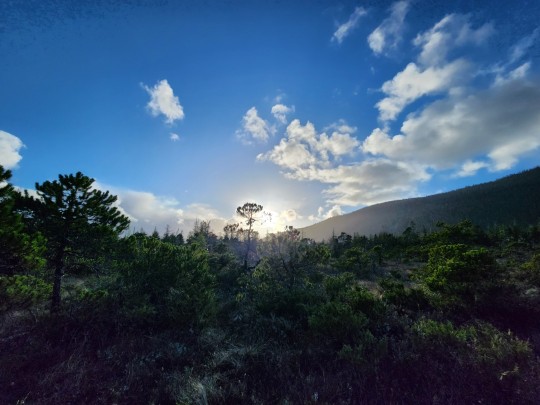

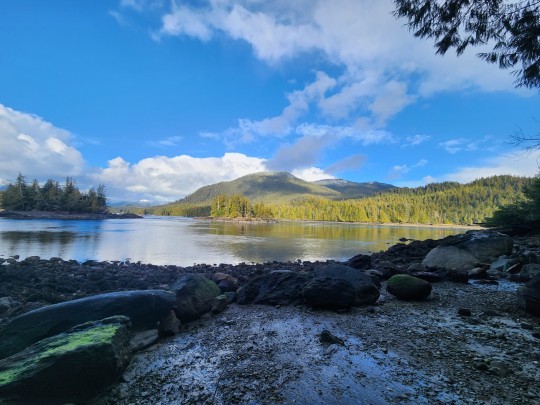
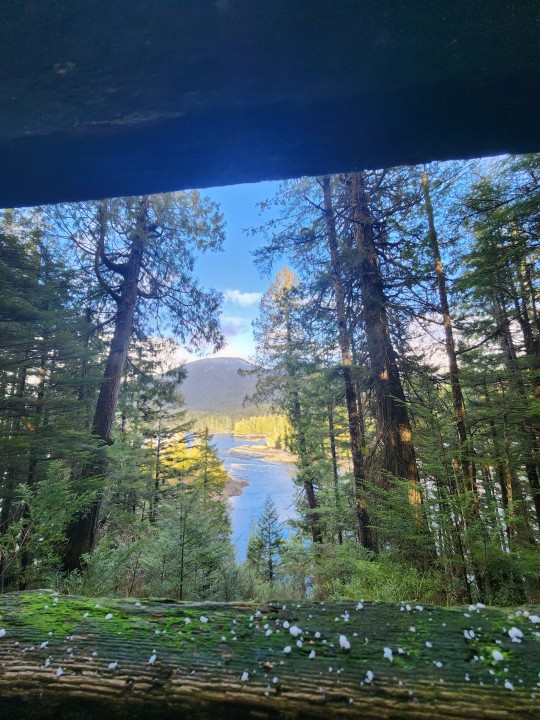
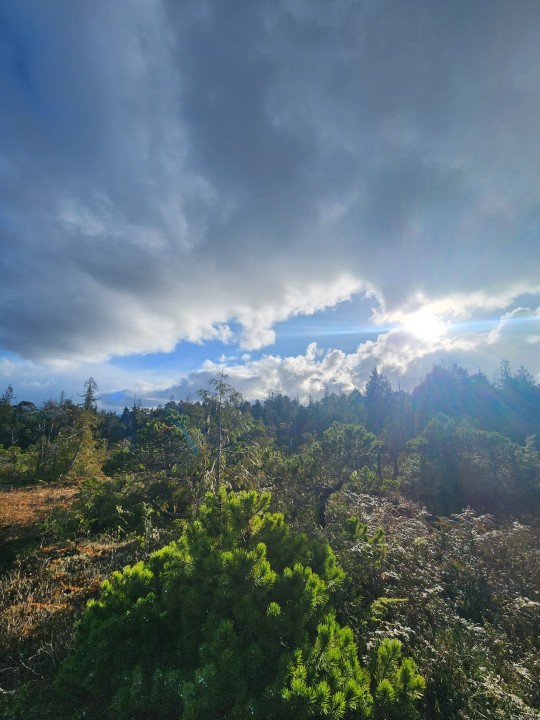
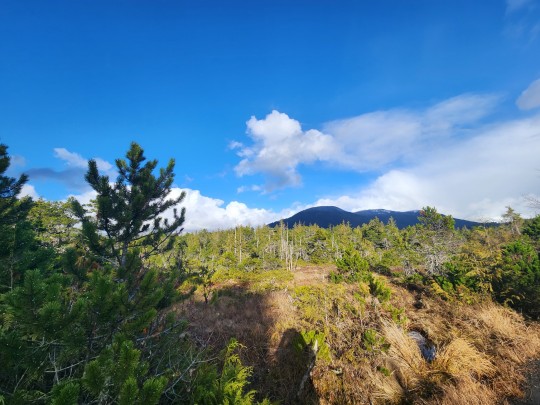
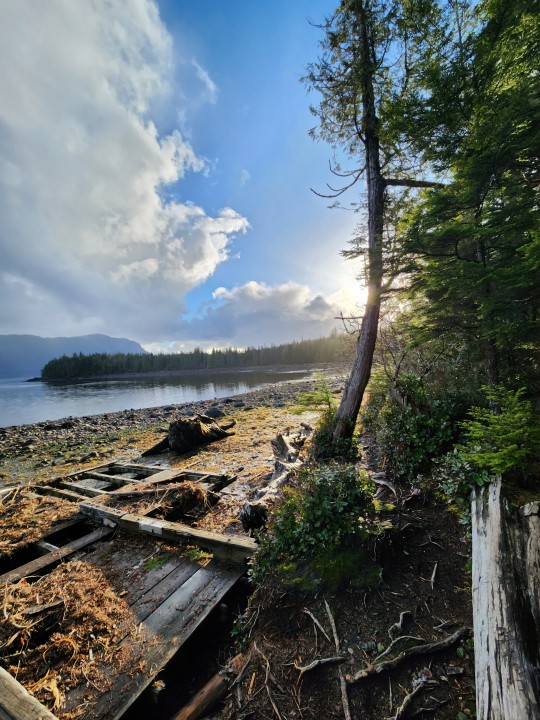
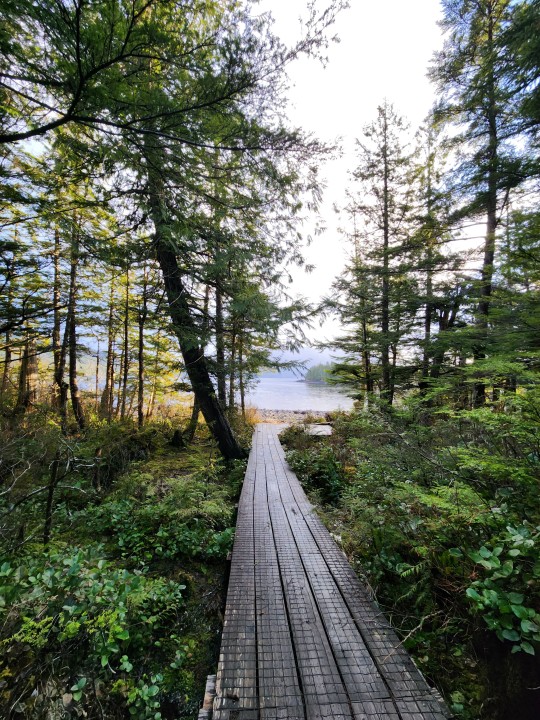
Prince Rupert, BC
February 13th, 2023
2 notes
·
View notes
Text
The Evolution of a Dairy Farming Business Plan
By Heather Smith Thomas, Photos courtesy of Alan Yegerlehner – The small family dairy farm in Indiana run by Alan Yegerlehner produces grass-fed milk products, marketed from their pasture dairy. This has been their dairy farming business plan for generations. For Yegerlehner, who grew up in Clay City, a small agricultural community in Indiana, his dairy farm encompasses the original 104 acres where he grew up, and where his great-great grandfather emigrated from Switzerland in 1860.
“Each generation has managed the farm in one way or another. My father came back to the farm after serving in World War II and went to Purdue,” says Alan. “After high school, I went to Purdue University for four years. I dragged my feet a bit, but my parents wanted me to go, so I did.”
After World War II, Alan witnessed the rapid changes in farming.
“I was at Purdue during the Earl Butz era in the 1970s when things were rapidly changing in agriculture,” he explained.
Modern technology and new practices aimed at increasing production were evolving during those years and dairy farming business plans were being adjusted to match the trend.
Ice Storms, Power Outages, Blizzards... Are you ready?
Let our experts help you prepare for the worst. Start your emergency preparation by downloading this FREE Guide. YES! I want this Free Report »
“This is what the colleges were preaching, so I accepted it and got swept up in the idea that dairy farmers needed to expand, increase production, leverage money—borrow all you can and grow big. Down deep inside me, I knew some of these things weren’t right, but I went into partnership with my father and we borrowed more money to expand. We accumulated quite a bit of debt, and our debt to asset ratio wasn’t the best,” Alan said.
He and his wife Mary were married in 1974. Alan graduated from Purdue in 1976, and they lived on the dairy farm.
“I’ve never had any other job. I grew up farming and kept at it a little while I was at school. When we came back full-time, Mary and I purchased my grandfather’s 80-acre farm, which is next to the original 104 acres and this is where we’ve been ever since,” he says.
“During those early years I was very interested in organic and direct marketing, but at that time no one was really doing that here in Indiana. If you mentioned these things you were labeled as a weird person!”
An Evolutionary Change to Yegerlehner’s Dairy Farming Business Plan
One day, he received a publication from New Farm magazine.
“I was amazed by the fact some people were actually doing this [organic dairy farming] and making a living at it. The next few years we tried to make some changes. I went to a couple of seminars that Rodale put on. I found another farmer nearby who was interested in the same thing. We compared notes and supported each other emotionally. We knew we weren’t completely alone,” Alan says.
“We started out with some changes in our cropping because that was where my biggest interest was. Our farm had crops and a dairy. My dad and mom started the dairy in 1950. We’ve had milk cows on the farm since that time. I was interested in both the dairy and crops, but maybe a little more interested in crops.”
As they made changes, they started to do some of the rotations a little more intensively, with more wheat, and adding more clover and legumes in the pasture ground they rented.
“We borrowed more money and put up some blue Harvestore silos. Our barn burned in 1973, so we put up a new block building and herringbone milking parlor, so we had a lot of debt,” he said.
“I started making changes in the cropping and tried rich tillage, trying to build soils using green manure and limited tillage. We were able to quit using herbicides, doing some experiments with rotary hoeing,” Alan said.
“We were having a good time with that, and doing some things that didn’t make us so dependent on the chemicals and commercial fertilizer. We went through the 1980s and early 1990s doing that, and we were actually growing nearly all our own feed for the dairy, using haylage, corn silage, and corn. We felt we were doing a good job managing what we had, but in the early 1990s, I realized that even though we were making all this progress with the crop farming we were not doing very much with the marketing side. We weren’t getting anything extra for our product because we weren’t marketing our milk as organic,” he said.
“We were feeding good feed to our cows but we still had all those silos and chopping equipment that I would have to replace—and have to borrow more money—so all of a sudden I realized this was crazy. In 1991, I was reading about grazing dairies, so we started grazing our cows rather than feeding them harvested forage. Then I read about seasonal dairying and the light bulb really went on,” explained Alan.
A Yegerlehner calf.
Many of their cows were calving in the fall, so he went to a fall seasonal calving. “This was before I really understood the seasonal aspects in relation to the grazing and the cows’ nutritional needs. Our fall calving was kind of nice because the cows were dry in the summer when it was hot, but it didn’t match up very well with the nutritional level of the grass for the cow and calves,” he says.
So the next year they delayed breeding six months, and brought the cows back into a spring calving window.
“Ever since 1993 or 1994, we’ve been spring calving our seasonal herd. But during the late 1990s, we were still selling our milk and crops on the commercial market.” He realized that they were going the right direction with their management, but were not getting paid for their extra efforts. The debts were still there and they weren’t making progress on reducing those.
“It was like our ship was slowly sinking. So in 1998, we made a tough decision. Cropping had been a part of our farm for a long time, but I decided to quit the commercial grain farming. We still had debt on some of our equipment and some of it was nearly worn out. Rather than borrow more money to replace it, we sold the equipment, and didn’t make enough to cover the debt on it. We gave up some of the land we rented, and just concentrated on the farm that Mom and Dad owned and the one I owned,” he says.
“We sold the silos (essentially gave them away) and put the whole farm into perennial grasses for a pasture dairy. For a couple years we were just milking the cows but were still selling the milk on a commercial market. We realized we needed to make some changes on the marketing side. In the fall of 1999, Mary and I started looking around to pick up some ideas. We decided to process our milk on the farm,” he said.
They bought some used equipment from a fellow who had made cheese in a winery. “I had never made cheese in my life, but we remodeled our barn and put in the equipment. The man who sold it to us came up here and helped us make the transition and gave us some quick lessons. We became cheesemakers.”
That next year was the start of a big change to our dairy farming business plan. “We went to seasonal grass dairying and direct marketing, producing everything on our farm. We didn’t really know what we were doing, but it was a leap of faith,” he said.
“Back in 1992, we had also had some experience with holistic management. A man I worked with here had some experience in sustainable agriculture. Mary and I took a couple of small training courses that helped us a lot—to steer us along the path with some key ingredients. It was still been a tough battle with the debt load; the debt was like a rock around our neck that kept us from going anywhere. Then a couple years ago we finally got things paid off.”
As part of holistic management in our dairy farming business plan, they looked at some of the changes they were making in 2000.
“We wanted to make some changes that would allow our children to farm with us later if they wished. We have three children, Kate, Luke, and Jess. If they wanted to come back to the farm, we wanted to have a way to work them in, too. This model of holistic management was helpful and really fit for us; we used those principles as we made the changes. We structured things so that they could farm with us if they wanted, and if they didn’t, that would be fine, too,” Alan said.
Alan Yegerlehner and his daughter, Kate, pose in a field after a cattle drive
“Our daughter, Kate, the oldest, loved cows all her life. That’s all she really wanted to do—take care of cows. She went to Purdue during 1998 to 2002, and after she graduated I let her take over a lot of the management of the cows and grazing. I helped wherever she wanted me to, but I gave her more of the responsibility, and the leeway to make mistakes. That’s what my dad did with me, and this is how we learn the most.
“My father was steeped in the commercial end of it with use of fertilizers, etc., but he was still very stewardship-minded in terms of taking care of the land with good soil and water conservation. He allowed me, when I came back, to take over a lot of things, and I’m sure he cringed many times at some of the changes I was making. He allowed me to make the mistakes and learn as I went,” Alan said.
Kate has had the same freedom to try things and make a few mistakes.
“She has tackled it and we all continue to make mistakes and we learn from them,” he said. It’s nice to see a family team effort on the farm.
“As we made the transition to on-farm processing, we still sold a little milk to the co-op for a few years. At that time there were not very many people making this kind of change. Our milk levels fluctuated a lot in what we were shipping to them and they finally told us they wanted all our milk or none of it. So we quit sending any milk to the co-op and everything we produced we have sold ourselves,” he says.
Marketing Up: A Key Component of a Dairy Farming Business Plan
“We started going to farmers markets, right after we began processing our own milk, and also had a little store at the farm. We’d gotten some ideas earlier, when Mary and I and our three children went to Switzerland, the year that my father passed away. We visited with our distant cousins and re-connected with some of our roots. We saw how everything was sold locally. We enjoyed seeing the small farms our cousins had, and how each village had their own cheese-making businesses, dairies and meat markets. Everything was produced locally. This was something I was really interested in but it was fascinating to see this in action,” Alan explained.
“We came back all fired up to market our own product. This was a dream I’d always had, but this brought it out in the open and we decided that this was what we needed to do. That’s when we remodeled the barn and made the little shop, with this pie-in-the-sky dream that everyone would come out to our farm to buy our milk products. This didn’t happen quite like we hoped, so as we grew we took our products to farmers markets. This worked pretty well because this gave us more exposure and we met a lot of people, and this led to other marketing venues, including some restaurants and different markets,” he said.
“Over the past 15 years we’ve done a lot of different things in terms of marketing, but our store and the farmer’s markets have been the cornerstone that helped us build. For a while, we were taking our products to four farmers markets, and this was time-consuming because we were limited on help. By the time we did the milking, processing, and packaging and delivering, it kept us all really hopping,” he said.
“The farmer’s markets were very helpful for us but we are phasing those out now, focusing more on direct marketing here at the store and some mail order sales. We hope to be able to direct sell everything we produce,” Alan says.
One concern is the increasing challenge with more government regulations.
“We were seeing a lot of that—government interference—regarding licensing and inspections. We sell raw milk, too, so that has been a challenging issue. We were trying to move toward a little more sovereignty and get out of some of these headaches. We surrendered our processing license and grade A license with the dairy. We were selling all our raw milk products (milk, butter, cheese and cottage cheese, etc.) as pet food, under a pet food label, because we have a lot of customers who want these. This brought on a whole different aspect of marketing because our normal venues like restaurants and wineries wouldn’t want to be selling pet food,” says Alan.
The cheese vat on the Yegerlehner farm.
“So we pulled back from this focus and have been just concentrating on our store. We still go to one farmer’s market but are also trying to build up some drop-off points. This has changed the complexion of our marketing. In the process, we have taken a hit, during this change, but we felt in our heart that this is what we should do, because of the purity of our product and the desires and needs of customers.”
The finished, organic cheese
The Cows
The dairy cattle on the dairy farm have been a variety of dairy cow breeds over the past 30 years. His father had Guernseys.
“Then we got Holsteins and did some crossbreeding with Holsteins and Guernseys. Then we brought in some Jerseys and did some crossing with them. After that, we brought in some Dutch Belted cows and milking Shorthorn, and then really started focusing on the milking Shorthorns. We have been breeding them for quite a few years and breeding some of our own bull calves. We also brought in some milking Devon. The past 10 years our breeding has been very focused on milking Shorthorn and milking Devon and developing them,” he said.
“We’ve been doing a lot of linebreeding, selecting for cattle that do well in a grazing dairy. These cattle do very well for us and are nice dual-purpose animals for meat and milk. We are just trying to fine-tune this to make them better and have been working closely with Gearld Fry for a few years, trying to learn the various aspects of linear measurements of cattle and developing our own breeding bulls, selecting cattle that work the best for us. But it’s a slow process,” he said.
It’s a long journey, working toward goals with genetic improvement in cattle. The genetic aspect is fascinating and challenging. “This is one of those things where the more you learn, the more you find out you don’t know,” he said.
The Family Adjusts to the New Dairy Farming Business Plan
“It’s all been rewarding and I don’t think we ever wanted to do anything different. Our children are very interested in and supportive of what we are doing. Kate is now a part of our dairy operation, but our sons didn’t feel led to be an active part in it after they grew up. All the kids did chores growing up, and were a help on the farm.”
Kids that grow up on dairy farms develop a good work ethic and are able to take on responsibility and do well in whatever walk of life they choose.
“Our middle son, Luke, went into aviation training. He wanted to fly, but went into air traffic control and has worked at a couple different airports and is now at Indianapolis. He seems to like that job. He’s married and we have two grandchildren. Our youngest son, Jess, is at Hagerstown, Maryland, working in the corporate world and also involved in ministry. He enjoys the farm but felt called to other places, too.”
His wife Mary has always had an active role with the dairy and doing bookwork for the dairy farm.
“In the early years when we started processing our milk, we were both down at the barn all the time. We sold a piece of land to neighbors who developed a small sheep operation, and Mary worked a little with them, too. Since we downsized our farm operation, we are back to Mary and I and our daughter Kate doing our dairy. Mary helps with a lot of the drop-offs and we both work together on that. We just juggle things around and make it work. In all of our management decisions we always talk it over and bounce ideas off each other, the three of us, and this helps us come up with the best approach we can.”
Have you tackled a new dairy farming business plan? What changes did you make to adjust to trends in the marketplace?
Originally published in Countryside July/August 2016 and regularly vetted for accuracy.
The Evolution of a Dairy Farming Business Plan was originally posted by All About Chickens
0 notes